A Baltic Midsummer 1: Salaspils Delight
It had been my desire to see how summer solstice is celebrated in the Baltic countries ever since I started making friends from the region almost 10 years ago. How could one not be attracted to the idea of singing and dancing around bonfires, ancient traditions and feasting on special delicacies? When I planned my summer European trip this year, I knew I couldn’t pass up this chance, and I chose to be in Riga, Latvia (where it’s called Ligo) for the festivities.
The Herbs and Grass Market
While the official holiday is on the 23rd and 24th every year, the celebrations started on Friday the 21st, which is the longest day of the year. The annual Herbs and Grass Market fills Doms Laukums (Cathedral Square) with stalls that weren’t there the previous day. Get close enough and you could smell the homemade bread, the cheese, biscuits, cured meats and freshly-cut flowers waiting to be wrought into garlands. A stage was set up for choral and dance performances as well.
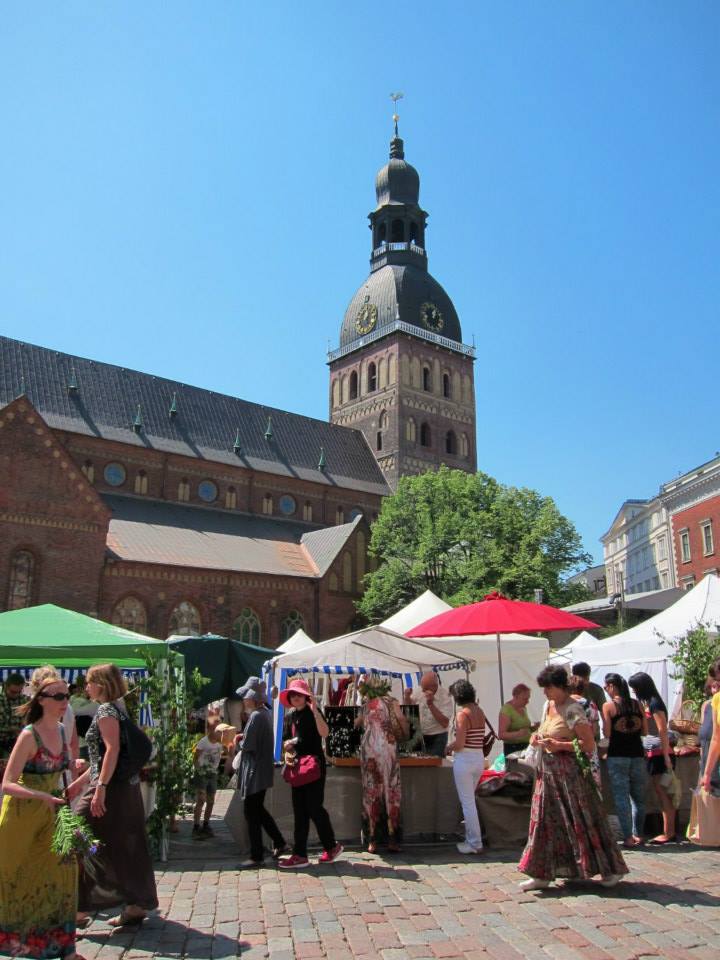
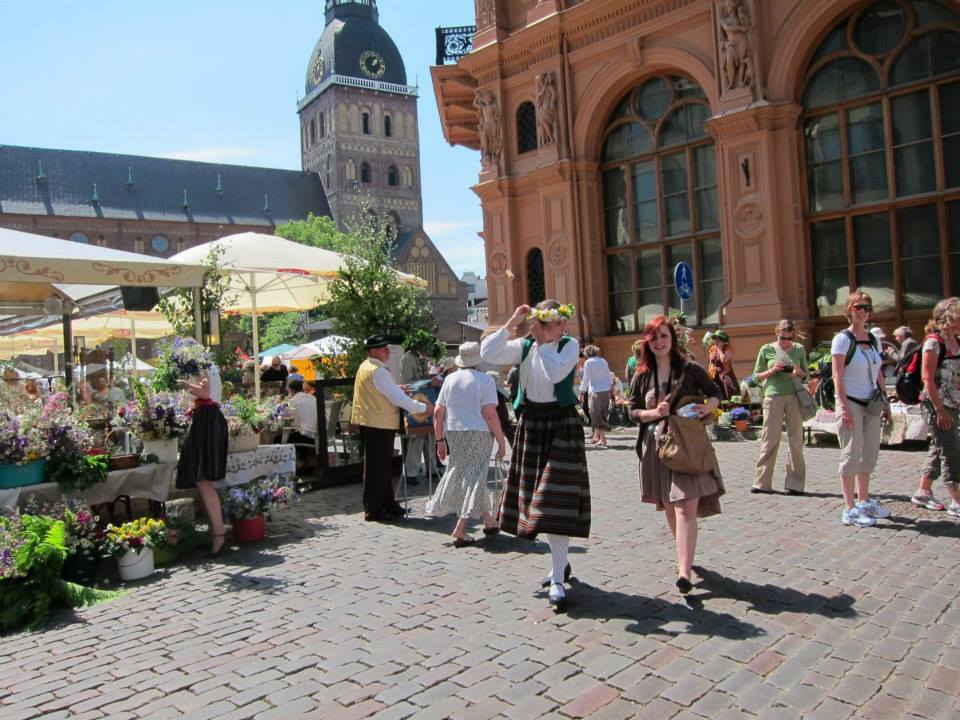
It was here that I met Vineta, who’d taken time off her hectic schedule and invited me to a celebration in Salaspils. When we contacted each other on Couchsurfing prior to my visit, I’d shared my wish to see the celebrations. As someone who’s actively involved in a dance group, she was keen to show me what her hometown had to offer this evening.
It’s less than 30 minutes from Riga by train but it feels so far from the bustle of the capital it’s actually a part of. We got into town in time for the start of the dance segment at the Salaspils cultural centre. On the street outside, people ate barbecued kebabs at picnic tables. I would’ve joined them but I was rather full after a hearty serving of peas and bacon back in Riga, so I sat down with Vineta on the grass with little children who were probably getting their first Ligo experience too.
Midsummer in Salaspils
When the band stopped playing, music was played over the speakers and the dancers filled the square. A different group emerged and took over each time a new song was played, and you could tell them apart by the garments they wore and the general age of the dancers.
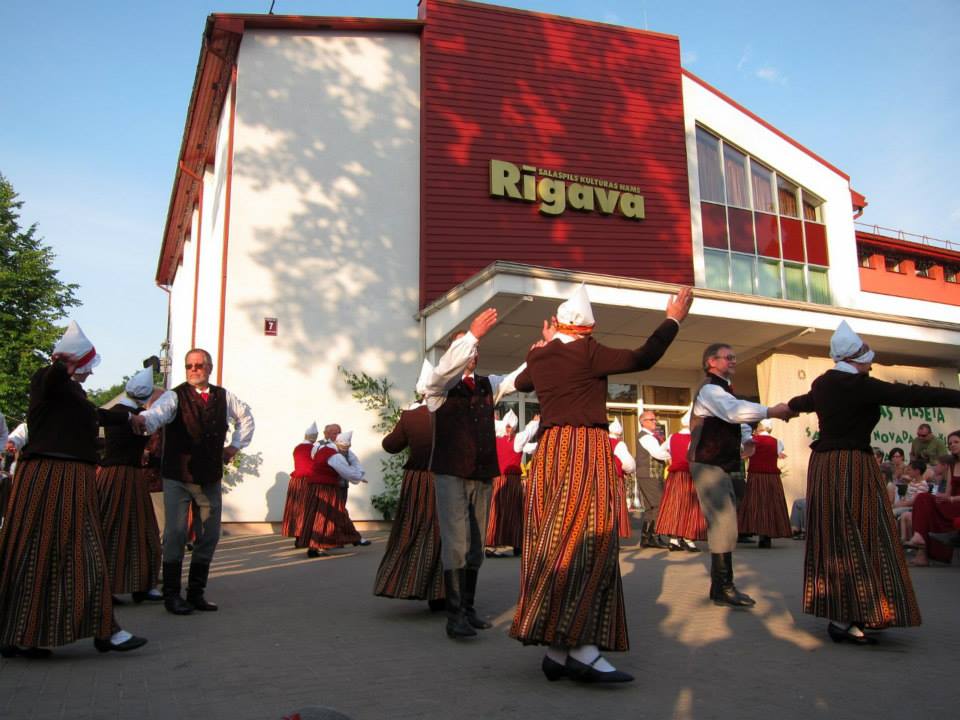
I couldn’t hope to understand the Latvian lyrics to the songs, but melodies and choreographed movements are universally understood and appreciated. Skirts billowed as the dancers skipped and whirled around. I was spellbound.
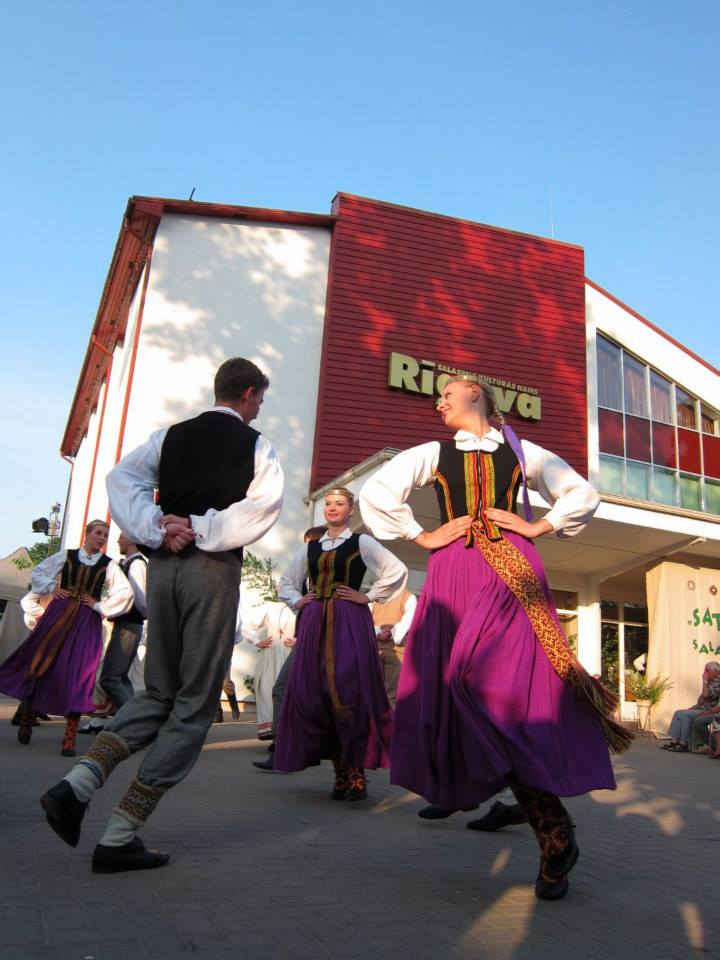
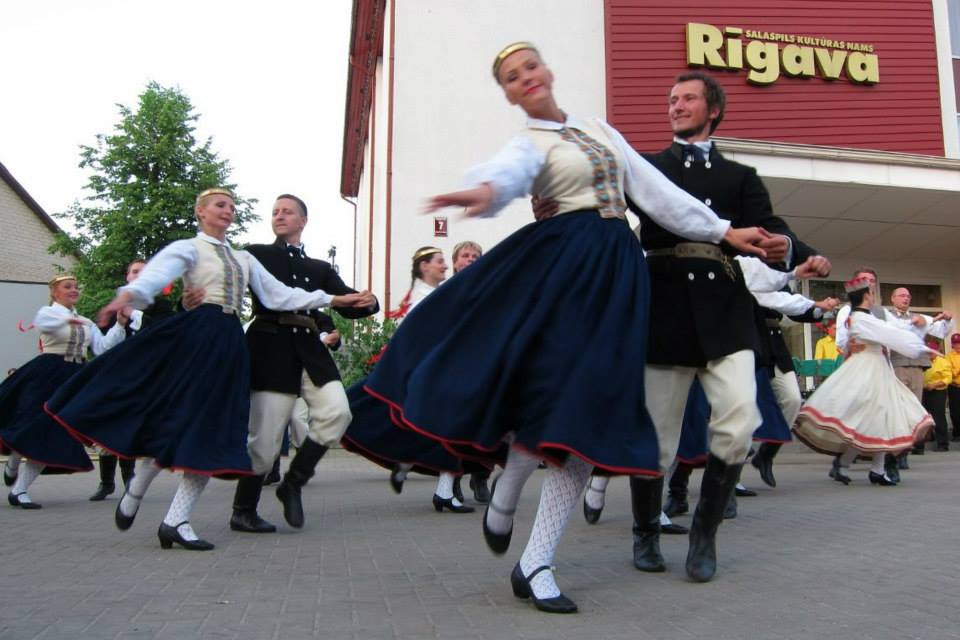
If it weren’t for Vineta’s descriptions between the songs, they would’ve been simply pretty routines to me. There were songs about storms and even going to the market: simple everyday things. And if one could watch from above, the dancers’ movements formed traditional motifs and patterns. Now the performances took on an added layer of meaning for this outsider.
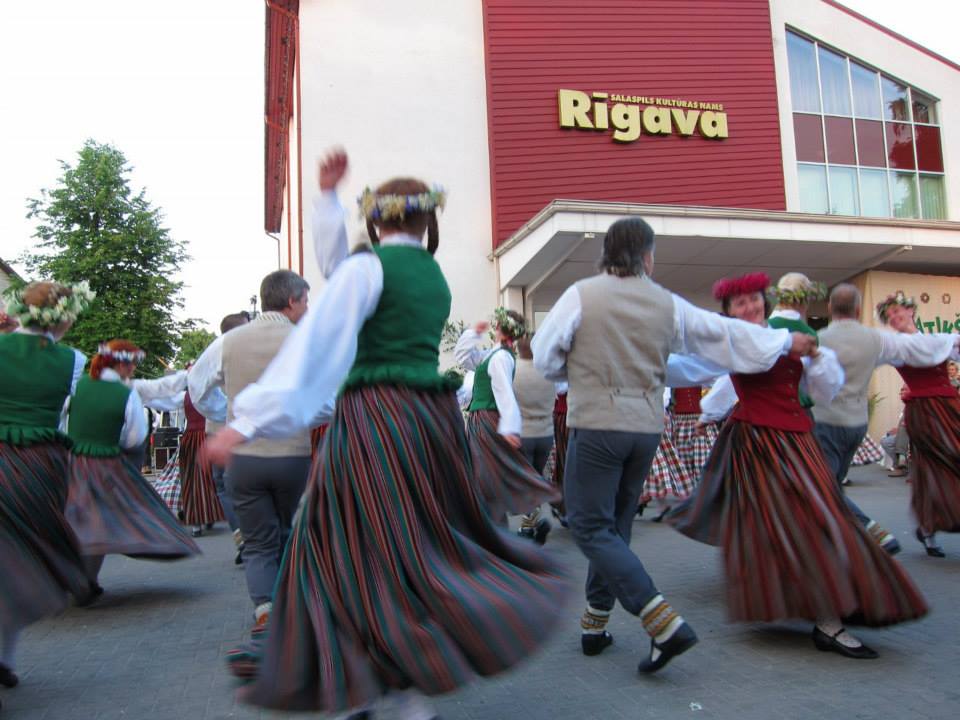
The dance was followed by an auction led by the Salaspils mayor (if I remember correctly) and it was got pretty funny sometimes as he had to show off a couple of dresses. By now it was 9.30 p.m., and the sun had just disappeared behind the trees. Vineta and I parted ways, as she had to get back to preparing for an even bigger festival, but not before noting that jasmine was in bloom around the train station. Thank God it was only Friday; the long weekend had just begun!
Part 2 will cover the celebrations later that weekend, and that post will be up shortly!
Update: Part 2 is now up, and so is Part 3! My return to Salaspils in winter too.
A Baltic Midsummer, Part 2 | Ramble Camp
08/11/2013 @ 8:32 PM
[…] The midsummer celebrations I was hoping to catch this year began in earnest on the 21st, and I wrote about what went down that day in Salaspils in Part 1. […]
A Baltic Midsummer, Part 3 | Ramble Camp
10/11/2013 @ 6:08 PM
[…] In case you missed them, this is where you’ll find Part 1 and Part […]
A Baltic Midsummer, Part 3 - Rambling Feet
07/11/2014 @ 12:13 AM
[…] In case you missed them, this is where you’ll find Part 1 and Part […]